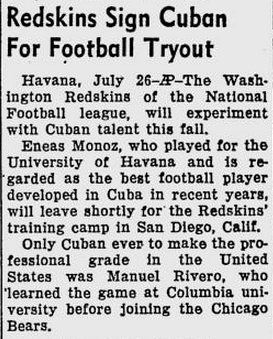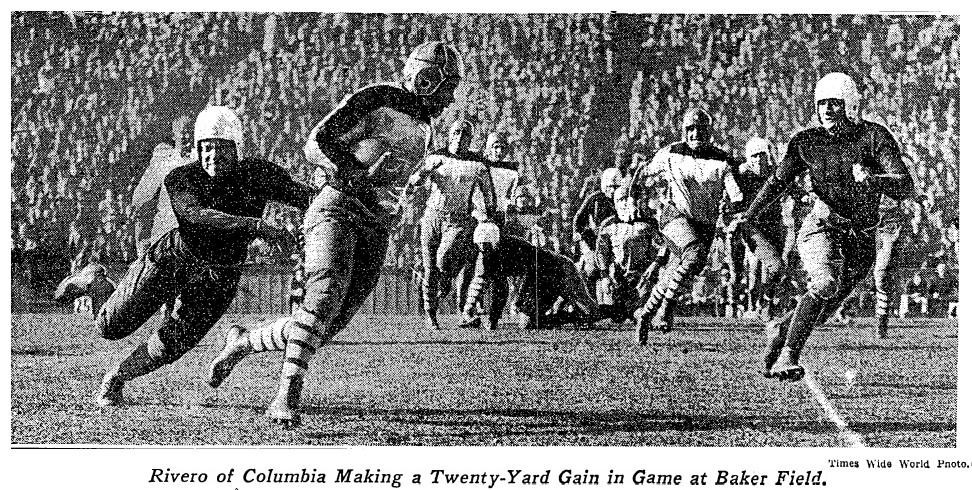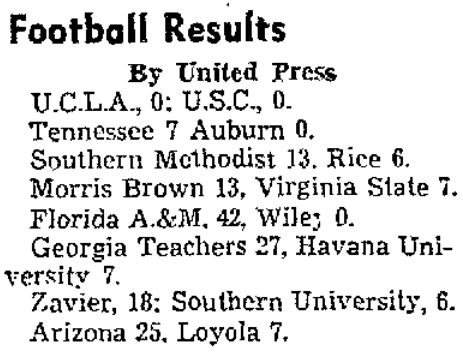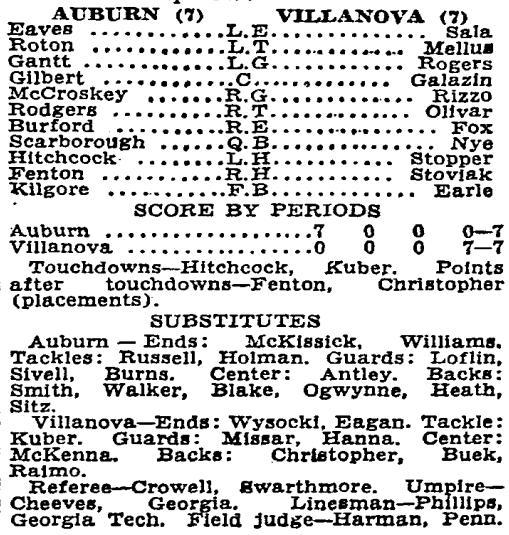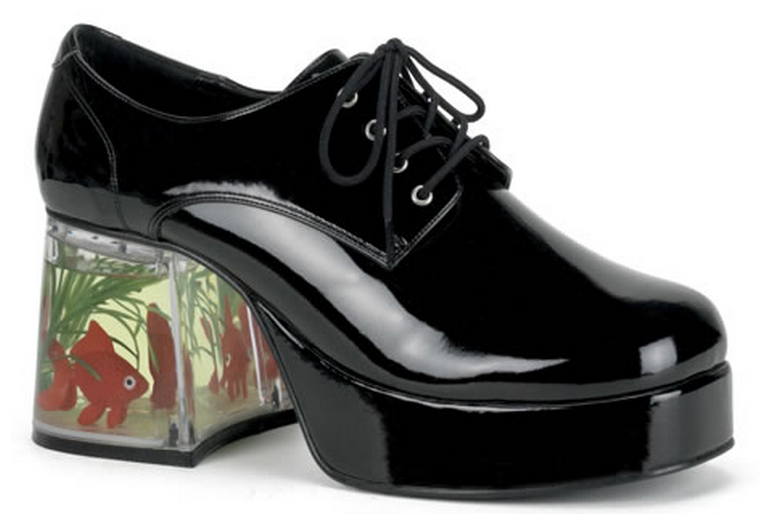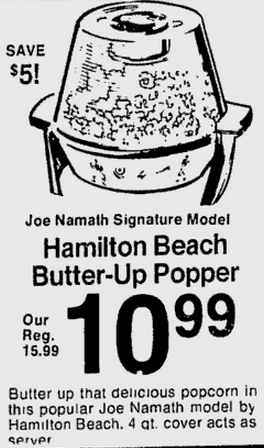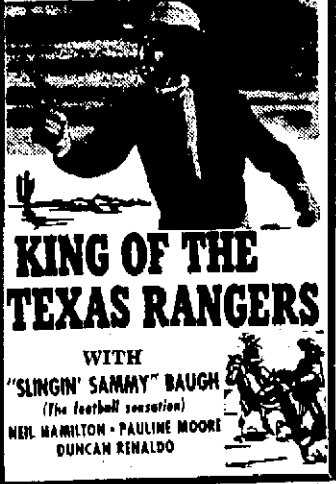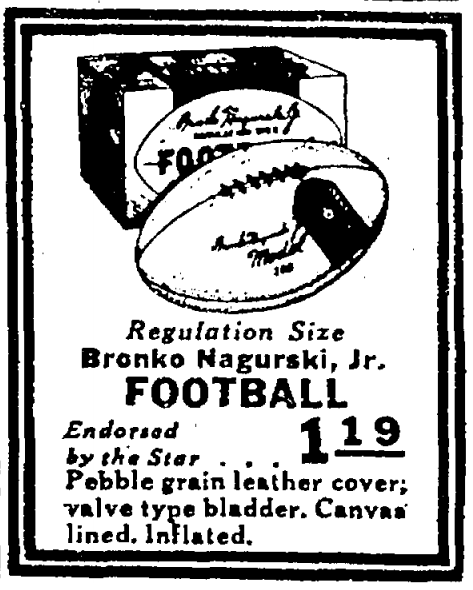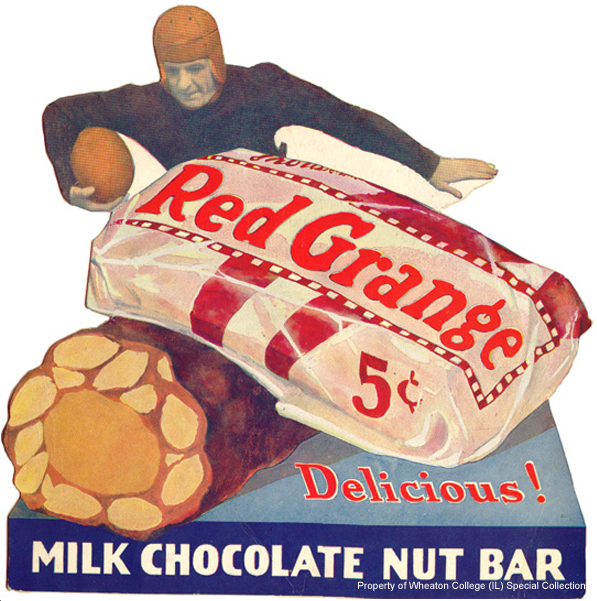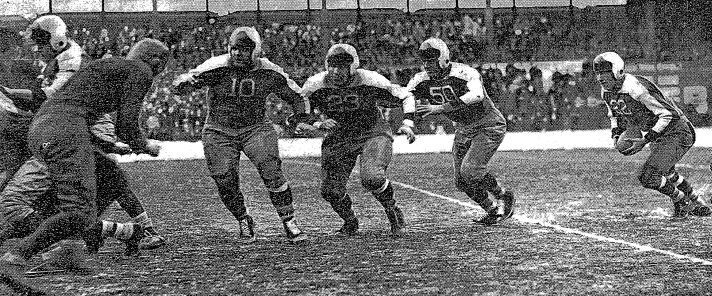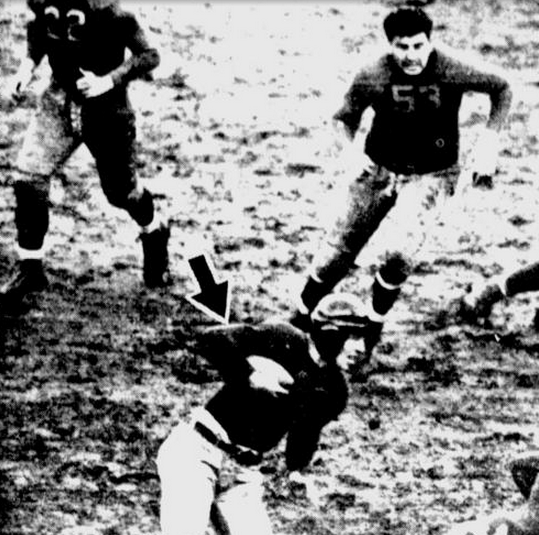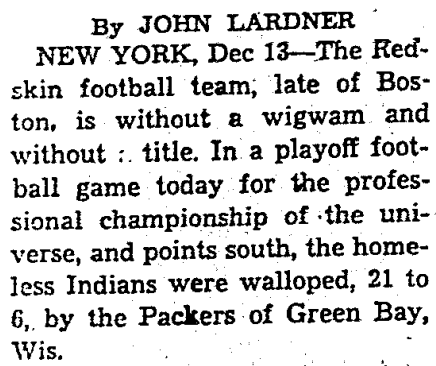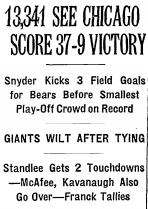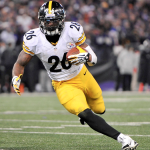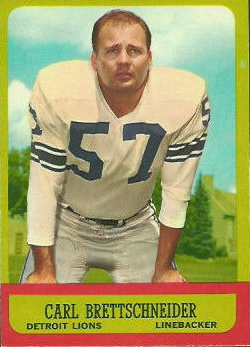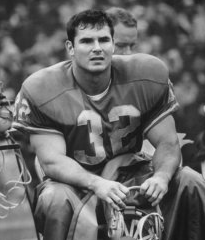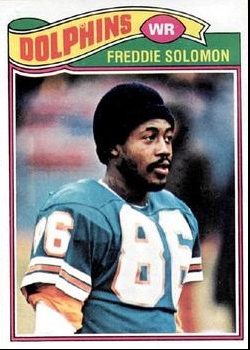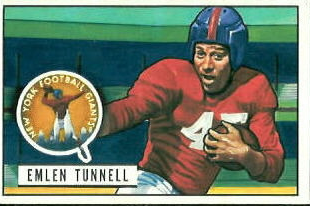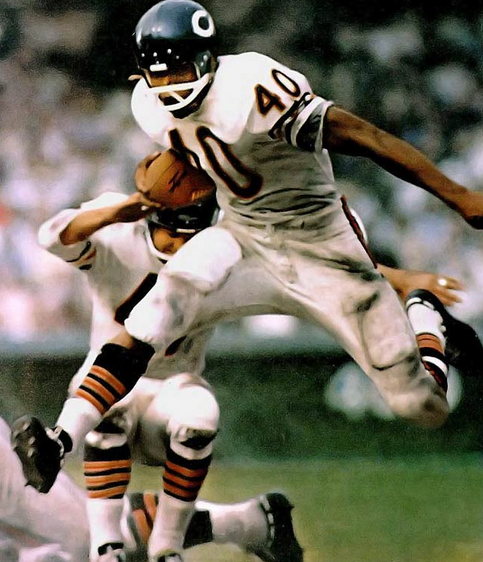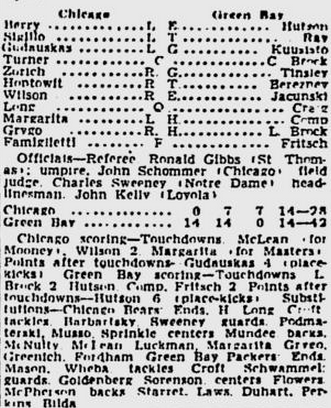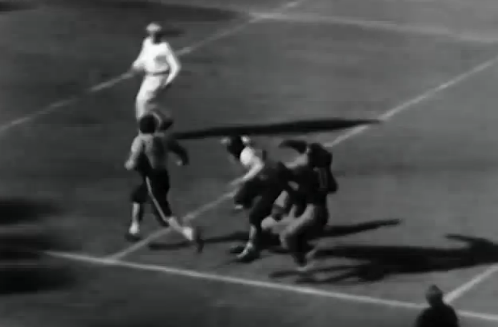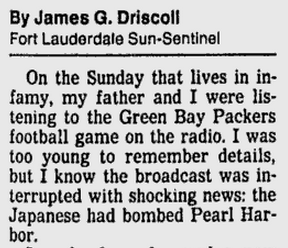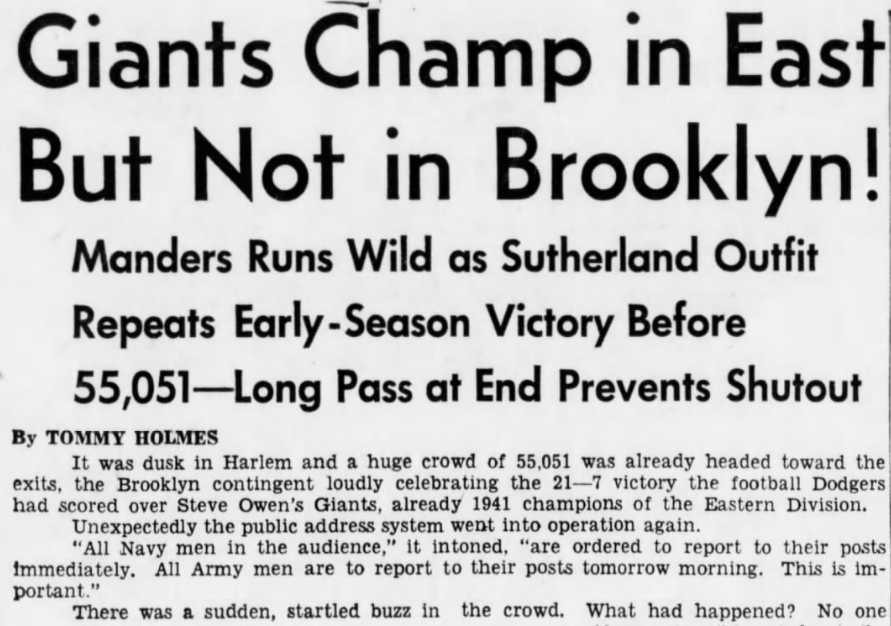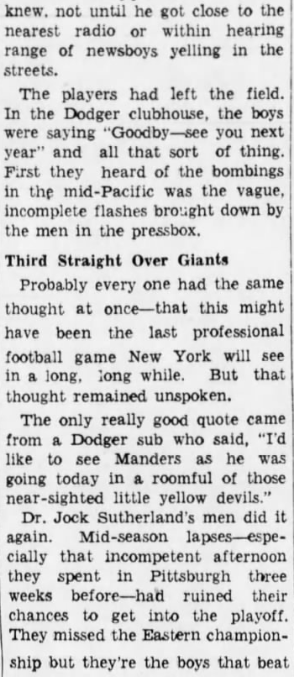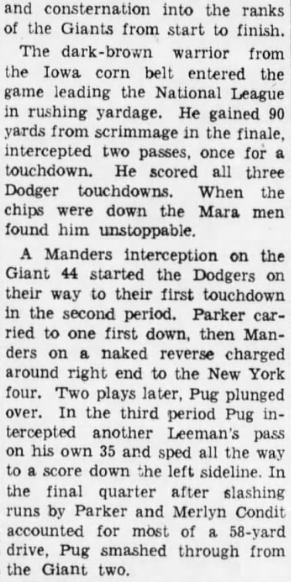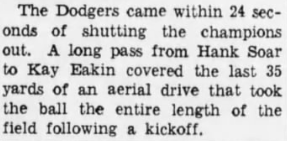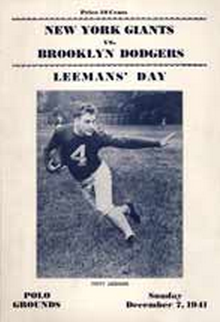On Christmas Day 1932, the Chicago Bears and Portsmouth Spartans played to a 6-6 tie before a sparse crowd of 2,000 in Cincinnati. I mention this because, well, they’d also met the Sunday before in the NFL title game — won by the Bears, 9-0.
You sometimes saw these championship rematches in the early days, before the league decided that maybe they weren’t such a good idea. After all, you want to be able to bill your title game as 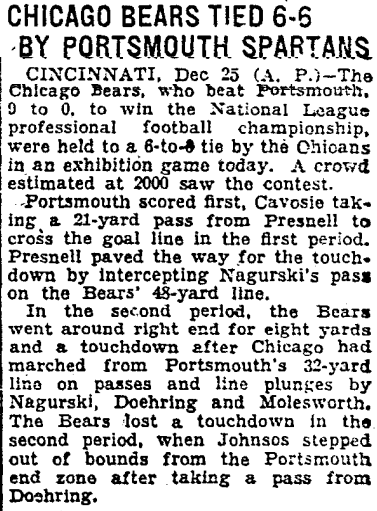 the be-all and end-all of your season. It was devalued a bit if the clubs played again a week — or a month — later in Los Angeles, Dallas or Miami, even if it was just an “exhibition tilt,” as The Portsmouth Times called it.
the be-all and end-all of your season. It was devalued a bit if the clubs played again a week — or a month — later in Los Angeles, Dallas or Miami, even if it was just an “exhibition tilt,” as The Portsmouth Times called it.
Rest assured both sides took the tilt seriously. That was the other thing about these rematches: They gave players a chance for retribution. Thus, the action at Redland Field, home of the baseball Reds, was “replete with vicious tackling and effective blocking,” the Times reported.
The Spartans scored first on a pass from Glenn Presnell to Harry Ebding. (I think. There was some disagreement about who the receiver was). The Bears tied it on a run by Red Grange. The score ended up 6-6 because both teams missed the extra point; Portsmouth’s was blocked and the Bears’ was wide.
Unfortunately, with so many empty seats, the game didn’t make enough money to cover the clubs’ guarantees. Instead, “the Spartans and Bears were offered 75 percent of the gate receipts,” the Times said. “The players received about 25 percent of their regular salary [for] playing this game.”
Portsmouth coach Potsy Clark had driven the 100 miles to Cincinnati, a trip that was much more adventurous than he’d planned. His car broke down and, despite Potsy’s best efforts, a mechanic had to be summoned . . . on Christmas Eve.
After the game “he said goodbye to all the boys,” according to the Times, “and then hopped into his automobile and left for Indianapolis, where he had Christmas dinner with his family.” Hitching a ride were fullback Ace Gutowsky and his wife, “who enjoyed the hospitality of Mr. and Mrs. Clark before leaving for Oklahoma City.”
As for the Bears, they caught a train to Nashville and played there the next day against the Boston Braves (the team that would become the Washington Redskins). It was the first pro football game ever played in the Music City, and the locals were in a festive mood. They spent most of the afternoon throwing firecrackers at one another.
The Bears weren’t the least bit distracted, though, Blinky Horn (yes, Blinky Horn) of the Tennessean wrote. “They long ago became accustomed to the rat-tat-tat of submachine guns in the Windy City.”
Fred Russell, the famed columnist for the Banner, poked his head in the Chicago locker room before the kickoff and was stunned to see players, quite a few of them, puffing away on cigars. “They can smoke any time up to an hour before the game,” he informed his readers. “But it’s taboo between halves.”
Fueled by nicotine, the Bears won easily, 25-0. But as in Cincinnati, the crowd was disappointing — only 2,000 to 3,000. Nashville was still very much a college town. (Indeed, the game was played at Vanderbilt’s Dudley Stadium). Some of the proceeds were supposed to go to the Community Chest to help the needy, but there was nothing left after the clubs took their cut.
That prompted this comment from Horn: “One of two things is certain — [either] pro football has no appeal to the citizenry of this township or the natives have poured out so much to assist charity that they have nothing left to give.
“There’s never been such a fullback in Dudley Stadium as [the Bears’] Bronko Nagurski. Nor such a passer as Johnny Doehring. Nor an end superior to Luke Johnsos. But all this sweetness was wasted in the desert air. For Nashville’s public is not pro football-minded. Or maybe they have too many headaches from Xmas ’nog and Xmas bills to take any acute interest in this visit of the champions.”
Sixty-eight years later the Titans would begin playing in Nashville — and things would change in a hurry. But in 1932 the NFL was still a rumor in large swaths of the country. That’s part of what the barnstorming was about: to plant the seed, even if it meant disrupting your Christmas holiday.

